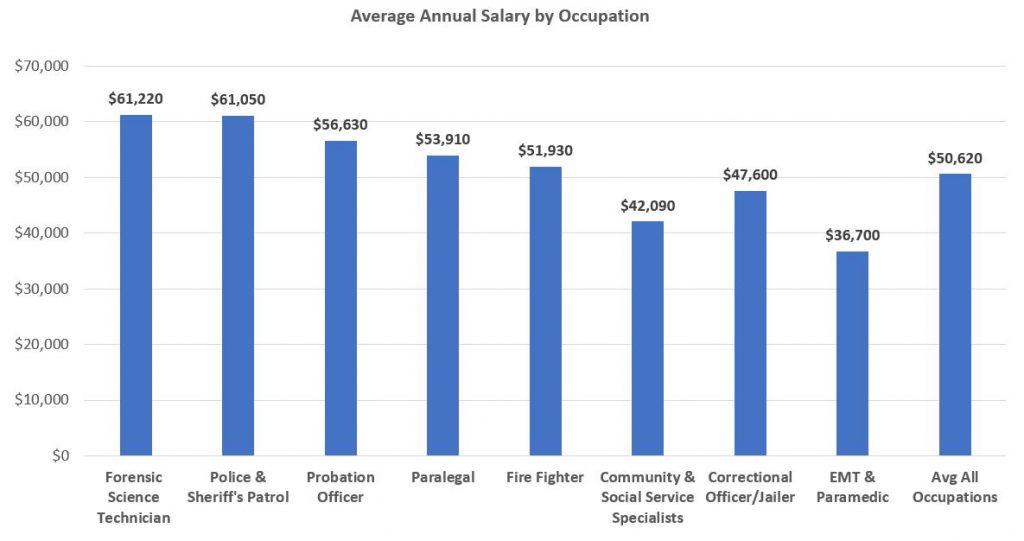Despite variation from one jurisdiction to another, a law enforcement career offers a very competitive salary and benefits package.
Salaries
According to the Bureau of Labor Statistics Occupational Employment Statistics Survey, as of May 2017, the average annual wage for police and sheriff’s patrol officers was $61,050 versus $50,620 for all occupations combined. The chart below shows how police salaries compare against other service industry and criminal justice-related fields.

As illustrated below, average salaries for police vary by agency type (industry), but most are above the national average. Actual salaries and starting salaries vary depending on location and agency size.

Supplemental Pay
Base salaries for police officers are often augmented by a variety of special pays, including:
- Shift differential pay for time worked on nights and/or weekends,
- Longevity pay based on years of service,
- Overtime, comp time, and court time for duty beyond the standard schedule,
- Annual uniform allowances, and
- Periodic equipment allowances.
Some departments also offer bonuses to officers with degrees, special training, or language skills.
Benefits
In addition to above average salaries, police enjoy benefits, retirement packages, and insurance coverage options that usually exceed those offered by private employers. In some agencies, full retirement is attainable in 20 to 25 years regardless of age. This means if you start early, you can retire in your forties and start a new career while still drawing your police pension. Many jurisdictions match employee retirement contributions, and some agencies offer tuition assistance, allowing you to further your education while maintaining fulltime employment. Still other benefits may include generous leave time, take-home vehicles, and free access to health/fitness facilities (and paid time to use them!).
When comparing agencies and weighing the pros and cons of each, it’s important to look beyond salary and consider the full range of benefits offered by an agency. What one agency lacks in base salary, it may more than make up for elsewhere.
The Public Safety Officers' Benefits (PSOB) Program
Through its Public Safety Officers' Benefits (PSOB) Program, the U.S. Department of Justice provides death, disability, and higher education benefits to officers and eligible survivors of officers killed or catastrophically disabled in the line of duty. The PSOB Program is a testament to the critical value the federal government places on the contributions of those who are willing to serve their communities during potentially dangerous circumstances and offers peace of mind to men and women who are seeking careers in public safety. For more information on PSOB benefits, visit www.psob.gov.
Combine all this with outstanding job security, and you have the makings of a fantastic career choice.
